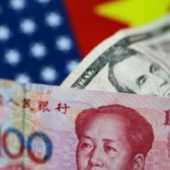Investing.com — Oil prices rose slightly Wednesday, hovering just above two-week lows after the OPEC cut its demand outlook again, while focus rturned to inflation data out of the US.
AT 07:50 ET (12:50 GMT), rose 0.1% to $71.99 a barrel, while gained 0.2% to $68.23 a barrel.
Oil prices were nursing steep losses over the past three sessions after fresh fiscal measures from China largely underwhelmed, while fears of supply disruptions in the Gulf of Mexico eased as tropical storm Rafael appeared to be dissipating.
OPEC cuts 2024, 2025 demand outlook again
The Organization of Petroleum Exporting Countries cut its outlook for global oil demand growth for a fourth consecutive month on Tuesday, citing persistent concerns over slowing demand in China and other major oil importers.
The OPEC said in its that it expects global oil demand to grow by 1.82 million barrels per day in 2024, down by 107,000 bpd from the prior month’s forecast.
The cartel has steadily cut its outlook for demand amid persistent economic weakness in China, as well as concerns over a switch to cleaner fuels in other parts of the world.
But the cartel still holds a relatively optimistic view on demand growth when compared to other energy watchdogs, especially the International Energy Agency.
The IEA is set to release a on Thursday, after also steadily cutting its demand outlook this year.
US CPI in focus
Markets also turned skittish over the U.S. economy, ahead of key data due later in the day.
The reading is widely expected to factor into the Federal Reserve’s outlook on interest rates, amid uncertainty over the potential impact on inflation of the policies of the incoming President Donald Trump.
Speculation over Trump’s planned policies have already pushed the greenback to a four-month high, hurting commodities, like oil, which are denominated in the US currency.
Additionally, Trump’s expected pick for secretary of state, U.S. Senator Marco Rubio, is known for his hardline stance on Iran, China and Cuba.
Rubio’s appointment could be bullish for prices, as his hawkish view on Iran could see sanctions enforced, potentially removing 1.3 million barrels per day from global supply.
Also in focus, is the American Petroleum Institute’s crude data, with the weekly number due a day later than usual after Monday’s Veterans’ day holiday in the US.
(Ambar Warrick contributed to this article.)
















